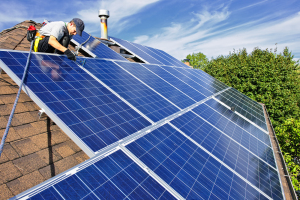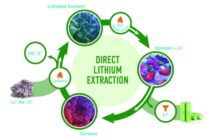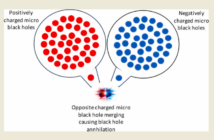Despite recent progress to increase the efficiency of solar power, it still only accounts for about one percent of the world’s total mix of energy. Yet the International Energy Agency (IEA) says that solar energy, most of it being generated by decentralized “rooftop” photovoltaic systems, could well become the world’s single biggest source of electricity by mid-century.
According to scientists and engineers, the best way to increase the efficiency of solar power lies in a generation of super-efficient, low-cost sunlight harvesters that take up where the recent flood of cheap silicon panels leaves off.
New designs and novel solar materials have recently been setting new efficiency records seemingly every week. Although research and development of solar power still falls far short of where scientists and engineers say it needs to be, innovators are making steady progress in creating a new generation of materials that can harvest the sun’s energy far more efficiently than traditional silicon photovoltaic cells.
Among the most promising technologies are multi-junction cells with layers of light-harvesters that each gather energy from a separate slice of the solar spectrum, super-efficient semiconductor materials like perovskite and gallium-arsenide, and cells made with tiny but powerful solar-absorbing “quantum dots.”
Technical hurdles, such as making new materials able to withstand the elements, remain. Nonetheless, researchers say, efforts now underway could begin to dramatically increase solar power generation within a decade or two.
Boosting the efficiency of solar cells is fundamental to increasing the sun’s role in the global energy supply. Current commercial photovoltaic cells need a lot of improving. The vast majority of solar panels on the market today use crystalline silicon cells able to convert on average only around 16 percent of sunlight into electricity.
Most of the rest are cadmium-telluride (Cd-Te) or copper-indium-gallium-selenide (CIGS) thin-films, with efficiencies in the range of 12 to 15 percent. Scientists say some of the new approaches could squeeze more energy from the rooftop panels, reaching up to 50 percent efficiency, making solar power increasingly more affordable.
Solar’s evolution over the past decade has been stunning, as falling prices and climbing demand draw the cost of photovoltaic with, or below, power sources such as coal and even natural gas in some places.
The change is so major it has upped expectations for the sun’s role in a clean energy future; the IEA recently raised its targets for solar electricity in 2050 by nearly 50 percent. The U.S. Department of Energy’s SunShot Vision study projects solar will provide 14 percent of American electricity by 2030.
At UPS Battery Center, our goal isn’t to only sell batteries, we want to inform and teach you about the amazing world of batteries, electricity and energy. Please check back for more interesting, helpful and informative articles about batteries and electricity.
Related Articles:
Harvesting More of the Sun’s Energy
Scientists Invent Spray on Solar Cells
Researchers Develop a Method to Generate Energy by Using Wasted Heat
Blu-Ray Discs Improve Solar Cell Performance
New Innovative Substance to be used in Solar Cells and Flexible Electronics




